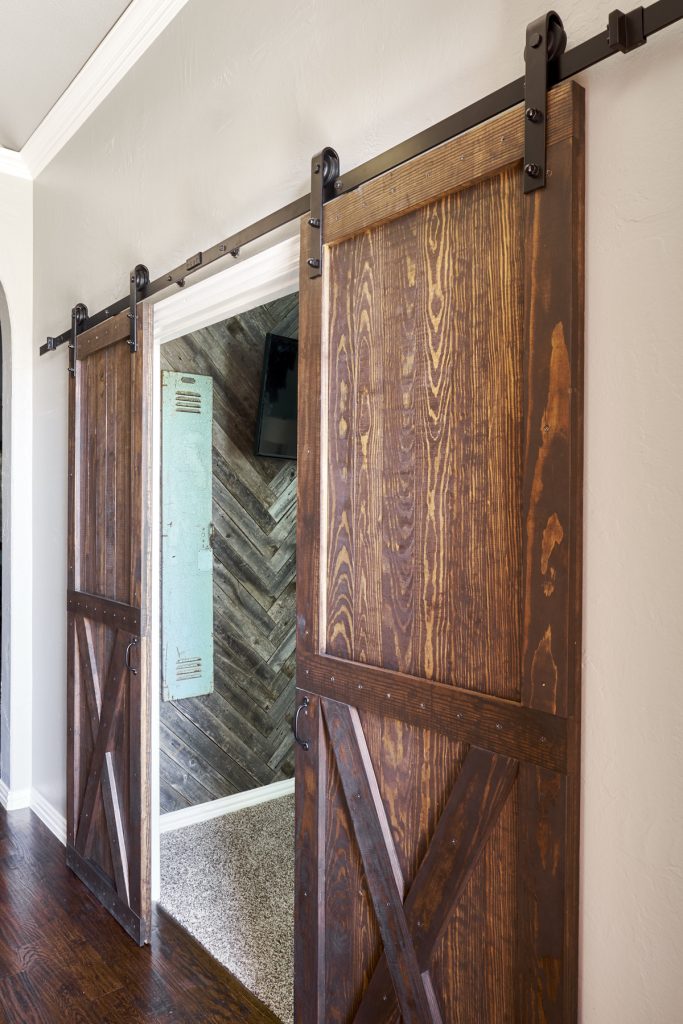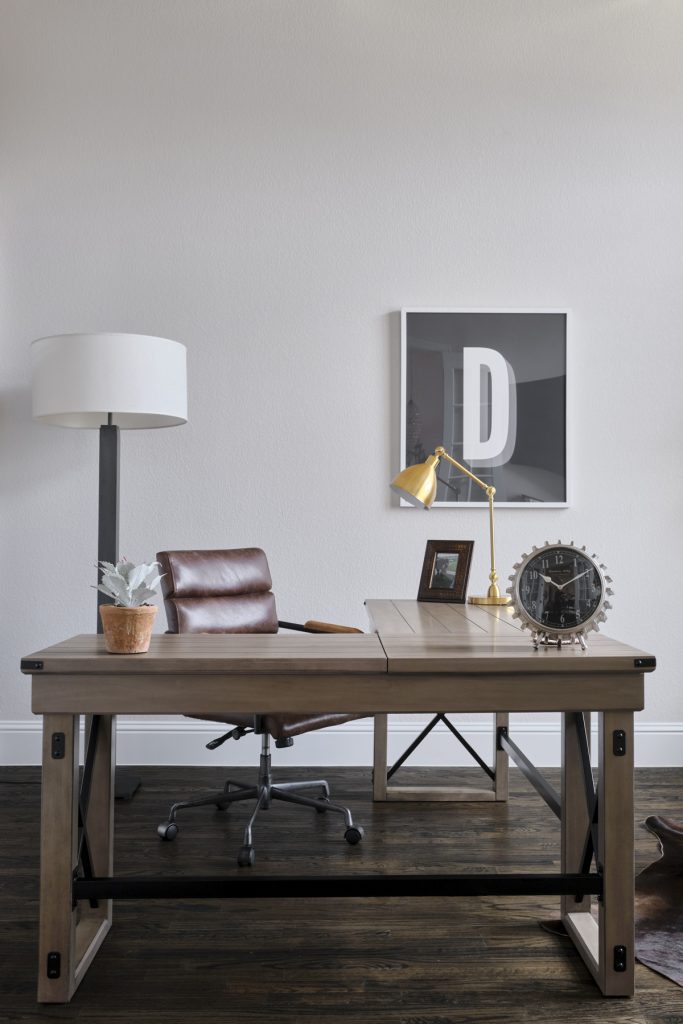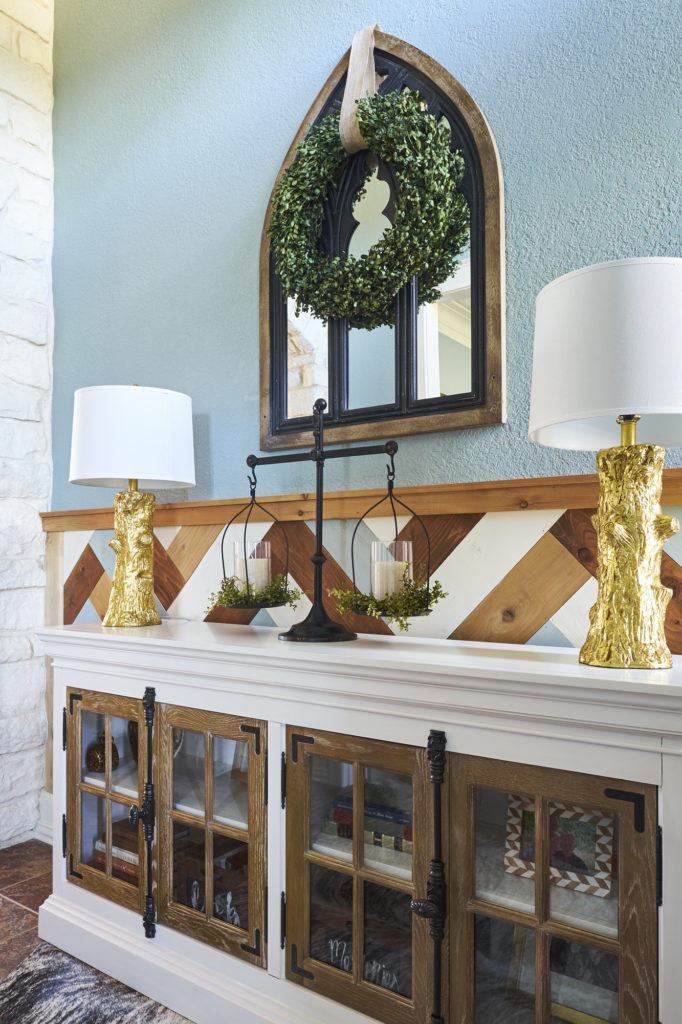Courtney Warren is a Texas-based interior designer whose work has been featured in Real Simple, Better Homes & Gardens, Good Housekeeping, Apartment Therapy, and Today.com. She is a frequent consultant on Fox 4 TV’s Good Day program in Dallas, was ranked in the top 3 percent of interior designers in the US by Houzz.com, and starred in the Dallas episode of TLC’sFour Houses. She delights in helping overwhelmed clients create beautiful spaces—and will never turn down a warm chocolate chip cookie or Diet Dr Pepper.
Shop the projects
My Go-To design accessories
How to Design Small Spaces Like a Pro
Do you live in a small space? Whether it’s a studio apartment or a tiny room, you may feel limited in how you can design small spaces. You don’t have to feel this way!
Styling a small space AND fitting everything you need can be a challenge.
But we have solutions for you.
Decorating smaller spaces CAN be fun and thrilling.
After years of tackling small spaces, we’ve mastered how to design them with charm and function. We guarantee our tips will pack a punch to your compact home just as much as their larger counterparts. Ready to design a small space like a pro? Let’s get to it!
Step 1: Always Create Zones
We can all agree that the biggest issue with decorating a small space is, well, they’re small. There’s a lack of square footage, which is why you need to start creating zones.
What is zone creation?
-Carving a natural separation between areas that otherwise lack a concrete wall or barrier.
For example, if you live in a studio apartment where your bedroom and living spaces connect, you may find it hard to entertain.

Solution?
Separate your sleeping zone from your living zone. Do this by adding a curtain to partition those two spaces. Now, you have a space for entertaining (that doesn’t invade your bedroom privacy).
OR, try panel room dividers, mountable sliding doors, or bi-fold glass doors.
These options will help you block off an opening between two spaces. Pocket glass doors are one of our favorite options. They allow light to travel between two areas AND don’t waste space as swinging doors do. Find cool options at IKEA here.
Step 2: Clear the floor as you design small spaces
Zone creation is essential, but so is keeping your floor clear.
What’s the point of having a beautifully divided space if you can’t even walk in it? Here’s why wall pieces work best.
Think vertical.
Opt-in for floating desks or tables, shelves, and nightstands. Keep the ground clear whenever possible!
Such as… using vertical storage that you can mount on the wall. Mounted desks and storage shelves take up way less room than traditional ones. Plus, because it’s a vertical set up, you can go as high as your ceiling height will allow.
What a perfect way to organize your clutter and access the items you use daily in a snippet of time!
Also, replace bulky media centers. These can be one of the biggest space wasters when decorating a small space. Instead, mount your TV! Use your walls and get back your floor space.

✩ Pro Tip:
Don’t forget to keep your lighting off the floor too! Search for sconces and wall lights. Both are excellent alternatives to floor lamps.
Step 3: Use Good Lighting
We can’t stress enough just HOW important lighting is! Big or small–good lighting can make or break any space.
This holds especially true for small spaces. Why? Small rooms that are also dark will make the space feel more dreary and closed-in.
Not blessed with a lot of natural light in your room? Fill in this gap by investing in a variety of light sources.
Don’t let your ceiling fixture do all the heavy lifting!
Use task lighting for desks. Install sconces for mood lighting. Also, don’t always choose the basic ceiling fan light. Instead, hunt for light fixtures with texture like this lovely wooden beaded chandelier.

Step 4: Think “Dual Purpose”
Good lighting is only one piece of the puzzle.
We need to live in these spaces, so how can we pick the right furniture pieces to live on? Shop for pieces that serve dual functions.
For example, use a day bed. These are quite handy– playing the sofa role during the day for extra guest seating… and then transforming into a full bed at night. PLUS, day beds also come with trundle options.
Have a house guest or a party friend that’s had way too many cocktails?
Roll out your trundle baby! And poof! Your guest has a place to sleep, AND you haven’t sacrificed any square footage.
AND, ditch giant dining tables! Instead, use a console table that can fold out to a dining table when you’re hosting get-togethers. For yourself, choose a small, round dining table for daily use. Foldable stools are lovely too! Tuck them away when not in use for more space saver options.
Step 5: Mirror, Mirror on the Wall
Space savers don’t have to be literal.
You can create the illusion of space, too.
Feeling unlucky when it comes to the amount of natural light in your space?
That’s okay. Mirrors will be the best way to trick your guests into thinking you have more space than you really do.
How?
Mirrors give you an illusion of more spaciousness because they reflect the light that you already have in your room.
Mirrors make spaces feel bigger because they add faux square feet.
Consider adding a large leaning floor mirror for this reason. OR, add different mirror shapes around your home — oval, square, small, rectangular. Mirrors are necessary when you design a small space because, along with looking pretty, they serve obvious functions too.

Step 6: Bespoke Storage is Crucial when you design small spaces
We’ve got one more trick up our sleeves.
Here’s how to pack more stuff into your home when you technically can’t.
Hello, sneaky storage nooks, built-ins, and tailored furniture! If you need places to store your clothes, shoes, and kitchen gadgets, this is what you need to focus on when designing a small space.
For example, get a custom bench that opens up as storage for shoes. These contraptions and similar concepts will be YOUR VERY BEST space savers.
Plus, it’s kinda neat and thrilling to find unexpected storage.
You’re like a magician.
Opening and popping things out of walls and benches at random.
Like those cool hidden bookcase rooms that open when you press on a vintage book!
No? Maybe, that’s just me. Regardless, hidden storage is always great to have. Plus, when built-ins are a part of the wall, they give you back valuable square footage and look clean.
Step 7: Breathe
- Give your area and pieces room to breathe! Create variety! Doing so will ensure a beautiful result as you design small spaces.
- Accomplish this by combining 1-2 larger pieces with smaller ones. Mix in a spacious sofa with a mini cocktail table instead of a large end table.
→Ready to design a small space in your home? Or, have more design questions on your mind? I’d love to help YOU find more ways to style YOUR home–big or small!
Do you want to work together from the comfort of our sofas?

Email me to book a call time! ☏
-
Find me at courtneywarren.com
-
on Instagram @courtneywarren
-
Have you got design questions? Consult with me (safely), and let’s find ways to help you love your home!